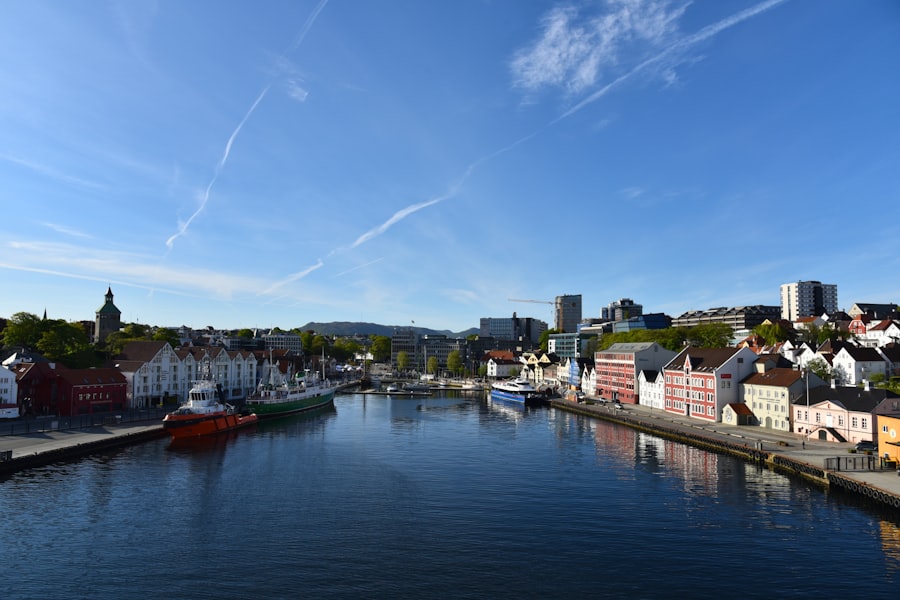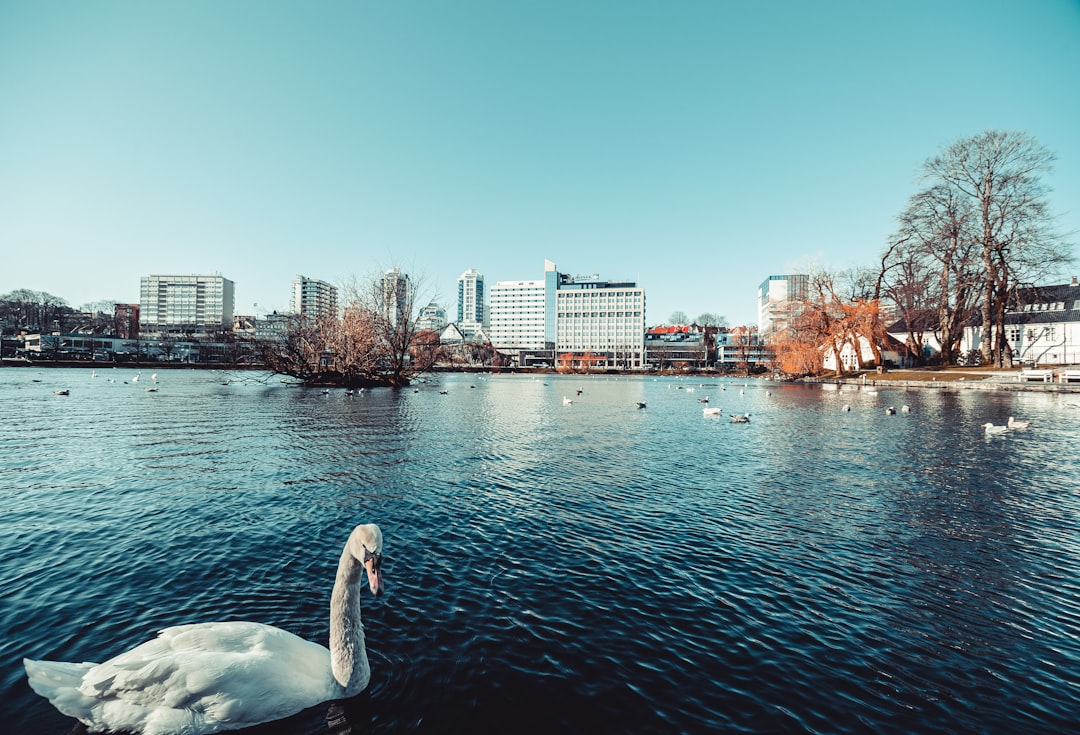Norway is renowned for its breathtaking landscapes, from majestic fjords to snow-capped mountains. However, the country’s climate can be quite challenging, particularly during the long, harsh winters. With temperatures often plummeting well below freezing, understanding how to adapt to such conditions is crucial for both residents and newcomers.
The climate varies significantly across the country, with coastal areas experiencing milder winters compared to the inland regions, where temperatures can be more severe. This variability necessitates a comprehensive approach to home design and insulation, ensuring that homes remain warm and comfortable throughout the year. For those considering relocating to Norway, the Norway Relocation Group can provide invaluable assistance.
They offer guidance on navigating the complexities of moving to a new country, including insights into local customs, housing options, and climate considerations. Their expertise can help newcomers acclimatise to the Norwegian way of life, making the transition smoother and more enjoyable. Understanding the climate is just one aspect of settling in, but it is a fundamental one that influences many decisions regarding housing and lifestyle. Plan your relocation with confidence. Book a personal meeting with the Norway Relocation Group today. https://norwayrelocation.no/one-hour-strategy-session/
Summary
- Norway has a cold climate with long winters and short summers, making proper insulation essential for homes.
- Proper insulation in Norwegian homes is important for energy efficiency, reducing heating costs, and maintaining a comfortable indoor temperature.
- Common misconceptions about Norwegian homes being cold are often based on outdated information and do not reflect the current standards of insulation and heating systems.
- Norwegian homes use a variety of insulation types, including mineral wool, cellulose, and foam, to effectively retain heat and keep out the cold.
- Government regulations and standards in Norway ensure that homes meet specific insulation requirements to improve energy efficiency and reduce carbon emissions.
The Importance of Proper Insulation in Norwegian Homes
In a country where winter temperatures can dip dramatically, proper insulation is not merely a luxury; it is a necessity. Insulation plays a pivotal role in maintaining a comfortable indoor environment while also reducing energy consumption. In Norway, where heating costs can be significant during the colder months, effective insulation helps to retain heat within homes, ensuring that residents stay warm without incurring exorbitant energy bills.
This is particularly important in a nation that places a high value on sustainability and energy efficiency. Moreover, proper insulation contributes to the overall structural integrity of homes. Inadequate insulation can lead to moisture build-up, which may result in mould growth and damage to the building materials over time.
By investing in high-quality insulation, homeowners not only enhance their comfort but also protect their investment in the property. The importance of insulation cannot be overstated; it is a critical component of any home in Norway, ensuring that it remains a safe and welcoming space throughout the year.
Common Misconceptions About Norwegian Homes Being Cold

One prevalent misconception about Norwegian homes is that they are perpetually cold and uninviting. This stereotype often stems from an outsider’s perspective, where the harshness of the climate overshadows the reality of modern Norwegian living. In truth, many homes in Norway are designed with comfort in mind, equipped with advanced insulation techniques and efficient heating systems that create warm and inviting environments.
The idea that all Norwegian homes are frigid fails to recognise the innovations in building practices that have emerged in response to the country’s climate challenges. Additionally, cultural factors play a role in shaping perceptions of warmth in Norwegian homes. Norwegians often embrace a minimalist aesthetic that may appear stark to those unfamiliar with it.
However, this design philosophy does not equate to coldness; rather, it reflects a deep appreciation for functionality and simplicity. Many homes feature large windows that allow natural light to flood in, creating a sense of warmth and openness despite the external chill. Thus, while it is true that Norway experiences long winters, the notion that homes are inherently cold is a misconception that overlooks the thoughtful design and modern conveniences that characterise contemporary Norwegian living.
Types of Insulation Used in Norwegian Homes
Norwegian homes utilise a variety of insulation materials tailored to meet the specific demands of the climate. One of the most common types is mineral wool, which offers excellent thermal performance and sound insulation properties. This material is particularly effective at preventing heat loss while also being fire-resistant, making it a popular choice among builders and homeowners alike.
Additionally, mineral wool is environmentally friendly, as it is made from natural or recycled materials, aligning with Norway’s commitment to sustainability. Another widely used insulation material is polystyrene foam, which provides high thermal resistance and is often employed in both walls and roofs. Its lightweight nature makes it easy to handle during construction, while its moisture-resistant properties help prevent issues related to dampness.
Furthermore, spray foam insulation has gained popularity in recent years due to its ability to fill gaps and crevices effectively, creating an airtight seal that enhances energy efficiency. Each type of insulation has its unique benefits, allowing homeowners to choose solutions that best suit their specific needs and preferences.
Government Regulations and Standards for Insulation in Norway
The Norwegian government places significant emphasis on energy efficiency and environmental sustainability within its building regulations. The Building Code (TEK) outlines strict standards for insulation in new constructions and renovations, ensuring that homes are equipped to withstand the rigours of the climate while minimising energy consumption. These regulations mandate minimum insulation values for various building components, including walls, roofs, and floors, thereby promoting a high standard of living across the country.
In addition to these regulations, various incentives are available for homeowners who invest in energy-efficient upgrades. The government encourages retrofitting older homes with modern insulation materials through grants and subsidies aimed at reducing overall energy consumption. This proactive approach not only benefits individual homeowners but also contributes to Norway’s broader goals of reducing greenhouse gas emissions and promoting sustainable living practices.
By adhering to these regulations and taking advantage of available incentives, residents can ensure their homes remain warm and energy-efficient throughout the year.
The Role of Heating Systems in Norwegian Homes

While insulation plays a crucial role in maintaining warmth within Norwegian homes, heating systems are equally important for achieving optimal comfort levels during the winter months. Most homes are equipped with central heating systems powered by electricity or renewable energy sources such as geothermal or biomass heating. These systems provide consistent warmth throughout the home, ensuring that residents remain comfortable even during the coldest days.
In recent years, there has been a growing trend towards utilising more sustainable heating solutions. Many homeowners are opting for heat pumps, which extract heat from the air or ground and transfer it indoors. This technology not only reduces reliance on fossil fuels but also significantly lowers energy costs over time.
Additionally, underfloor heating systems have gained popularity for their ability to provide even warmth across living spaces without taking up valuable wall space. The combination of effective insulation and modern heating systems ensures that Norwegian homes remain cosy sanctuaries amidst the harsh winter climate.
Energy Efficiency and Sustainability in Norwegian Home Insulation
Norway’s commitment to sustainability extends beyond government regulations; it permeates every aspect of home construction and renovation. Energy efficiency is at the forefront of modern building practices, with many homeowners prioritising eco-friendly materials and methods when insulating their homes. This focus on sustainability not only benefits individual households but also contributes to national efforts aimed at reducing carbon footprints and promoting renewable energy sources.
Innovative insulation technologies are continually being developed to enhance energy efficiency further. For instance, some builders are now incorporating phase change materials (PCMs) into their designs. These materials absorb and release heat as they change states, helping to regulate indoor temperatures more effectively.
Additionally, green roofs and living walls are becoming increasingly popular as they provide natural insulation while also promoting biodiversity within urban environments. By embracing these sustainable practices, Norwegian homeowners can create comfortable living spaces that align with their values regarding environmental stewardship.
Tips for Keeping Norwegian Homes Warm and Comfortable
To maximise comfort during Norway’s long winters, homeowners can implement several practical strategies beyond relying solely on insulation and heating systems. One effective method is to ensure proper ventilation throughout the home. While it may seem counterintuitive to allow cold air inside during winter months, adequate ventilation helps prevent moisture build-up and maintains indoor air quality.
Installing heat recovery ventilation systems can further enhance this process by capturing heat from outgoing air and using it to warm incoming air. Another tip for keeping homes warm involves utilising heavy curtains or thermal blinds during colder months. These window treatments act as an additional layer of insulation by trapping heat within the home while blocking out drafts from windows.
Additionally, sealing gaps around doors and windows with weatherstripping or caulking can significantly reduce heat loss and improve overall energy efficiency. By combining these practical measures with effective insulation and heating systems, residents can create warm and inviting spaces that withstand even the harshest winter conditions.
The Cost of Insulation and Heating in Norwegian Homes
Investing in quality insulation and efficient heating systems can initially seem daunting due to associated costs; however, it is essential to view these expenses as long-term investments rather than short-term burdens. While upfront costs may vary depending on materials used and home size, many homeowners find that energy savings over time offset these initial expenditures significantly. In fact, well-insulated homes often experience reduced heating bills during winter months, leading to substantial savings over time.
Moreover, government incentives aimed at promoting energy efficiency can help alleviate some financial burdens associated with upgrading insulation or heating systems. Homeowners may qualify for grants or low-interest loans designed specifically for energy-efficient renovations. By taking advantage of these opportunities while investing in quality materials and systems upfront, residents can ensure their homes remain comfortable without incurring excessive costs over time.
Comparing Norwegian Homes to Homes in Other Cold Climates
When comparing Norwegian homes to those found in other cold climates around the world, several key differences emerge regarding design philosophies and construction practices. For instance, many Scandinavian countries prioritise minimalism and functionality in their architectural styles—an approach that contrasts sharply with more ornate designs often seen elsewhere. This focus on simplicity allows for efficient use of space while promoting natural light within living areas.
Additionally, building codes regarding insulation standards tend to be stricter in Norway than in many other regions experiencing cold weather conditions. Countries like Canada or Russia may have similar challenges regarding winter temperatures; however, their approaches towards insulation may vary significantly based on local customs or available resources. Ultimately, understanding these differences can provide valuable insights into how various cultures adapt their homes for comfort during harsh winters.
The Truth About Norwegian Homes and Cold Weather
In conclusion, while Norway’s climate presents unique challenges for homeowners—particularly during winter months—the reality is far removed from common misconceptions about coldness within Norwegian homes. With proper insulation techniques combined with efficient heating systems at play, many residences offer warmth and comfort even amidst frigid temperatures outside. Furthermore, ongoing efforts towards sustainability ensure that modern building practices align with environmental stewardship goals.
For those considering relocating to Norway or simply seeking more information about living conditions here—the Norway Relocation Group stands ready to assist every step of the way! Their expertise will help newcomers navigate housing options tailored specifically for this beautiful yet challenging environment while providing insights into local customs surrounding home design. Lastly, if you’re looking to immerse yourself further into Norwegian culture—consider enrolling in courses at NLS Norwegian Language School located in Oslo!
Learning the language will not only enhance your experience but also deepen your understanding of how Norwegians approach life within their uniquely designed homes amidst stunning natural landscapes!
Register for a Norwegian class at the NLS Norwegian Language School now!

